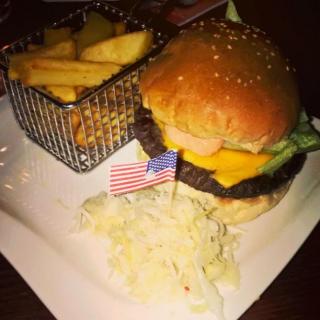Must-try Dishes
Swabian Potato Salad - Schwäbischer Kartoffelsalat (tangy and hearty) - This salad features boiled potatoes with a vinegar and broth dressing, making it pleasantly tangy. Locals often enjoy it as a side dish during barbecues or with sausages on Sundays.
Leberkäse - Leberkäse (German meatloaf) - A very filling meat loaf made from a mixture of beef and pork, pressed into a loaf and baked until golden. You can find it at street stalls served warm in a bun, especially popular at lunchtime.
Maultaschen - Maultaschen (Swabian dumplings) - These large pasta pockets are typically stuffed with a savory filling of minced meat, spinach, and breadcrumbs, often topped with a tasty broth. Commonly eaten at dinner, they hail from a traditional Lenten recipe and are sometimes referred to as “Swabian ravioli.”
Spargel - White Asparagus (seasonal delight) - This is a springtime favorite, typically served with melted butter, hollandaise sauce, or simply with potatoes. Many locals look forward to the Spargelzeit (asparagus season) and indulge in specialty dishes celebrating this ingredient.
Brezen - Pretzel (soft baked goodness) - A twisted bread topped with coarse salt, it’s often enjoyed as a substantial snack or quick breakfast. You might see locals grabbing them on the go, especially at bakeries early in the morning.
Käsespätzle - Käsespätzle (cheesy noodles) - Soft egg noodles baked with a generous amount of melted cheese and topped with crispy onions, making for a rich main course. It’s beloved in many households as a hearty dish, especially in colder months, often served in cozy restaurants full of locals.
Bratwurst - Bratwurst (grilled sausage) - This savory sausage made from finely minced meat is grilled to perfection and often served with mustard. You’ll find it at outdoor markets, especially during festivals, but a common mistake is to ask for ketchup; locals usually prefer mustard!
Schäufele - Pork Shoulder (hearty main) - A tender and flavorful piece of pork shoulder, slow-roasted with a crispy skin, typically served with potato dumplings and sauerkraut. Locals savor it during family dinners, especially around holidays or special occasions.
Desserts & Drinks
Weißer Glühwein - White Mulled Wine (spiced white wine) - This warm, aromatic drink combines white wine with spices like cinnamon, star anise, and citrus fruits, often sweetened with sugar. You’ll find it served at Christmas markets, creating a cozy atmosphere during chilly winter nights.
Radler - Radler (beer and lemonade mix) - A refreshing mix of light beer and lemonade, making it a popular thirst-quencher, especially in summer. Locals often enjoy Radler during backyard barbecues or while sitting outside at cafés to savor the sunshine.
Kaffee crème - Kaffee crème (creamy coffee) - A smoother version of espresso, made by pulling a longer shot and served in a larger cup with a frothy crema. It’s a common afternoon pick-me-up, best enjoyed at a traditional café while people-watching.
Schwarzwälder Kirschtorte - Black Forest Cake (cherry chocolate cake) - A decadent dessert layered with chocolate sponge, whipped cream, and cherries, infused with Kirsch (cherry schnapps). Perfect for birthdays and special occasions, locals usually enjoy it with coffee.
Spaghettieis - Spaghetti Ice Cream (filament-like ice cream) - This playful dessert features vanilla ice cream squeezed through a ricer, resembling spaghetti, topped with strawberry sauce and grated white chocolate. Found mostly during hot summer days, it’s a hit with kids (and the young-at-heart).


